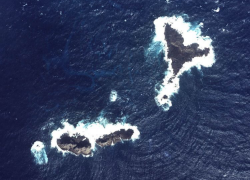
On November 23, 2013, China declared an Air Defense Identification Zone (ADIZ), which stated that “aircraft in the area must report their flight plans to China, maintain two-way radio and clearly mark their nationalities on the aircraft.” China’s declaration has drawn harsh criticism from Japan and the United States.
While ADIZs are not a new concept, China’s ADIZ has created tension because the zone includes a chain of islands that are the center of a long dispute between China and Japan. ADIZs are declared by many nations, allowing the territory to potentially stop unfriendly aircraft from entering its airspace. James Hardy, the Asia-Pacific Editor of IHS Jane’s Defence Weekly, stated that an ADIZ is “unilaterally imposed, so it doesn’t really have a legal basis and isn’t based on negotiations with neighbors.” The ADIZ includes the Daioyu/Senkaku islands, which both Japan and China claim as part of their territory.
Secretary of State John Kerry released a press statement on November 23, noting its deep concern over China’s ADIZ and warning that the move will increase tensions and a risk of an accident. The Secretary stated that the United States does not “apply its ADIZ procedures to foreign aircraft not intending to enter U.S. national airspace,” and urged China not to take action against aircraft that do not comply. China’s state-run news agency said that the U.S. and Japan are “pursuing double standards,” condemning the countries for voicing concerns over China setting up an ADIZ while both countries have had an ADIZ in place for years. The state-run news agency said, “Japan set up such a zone in the 1960’s and it even one-sidedly allowed the zone to cover China’s Diaoyu Islands.”
The disputed islands, called Senkaku Islands by Japan and Diaoyu Islands by China, are claimed by both Japan and China. China claims that Chinese fisherman began using the islands in the 1400’s, and has had a right of ownership ever since. However, Japan recognized the islands as part of its territory in 1895, after conducting a survey in which it “saw no trace of Chinese control of the islands.” After Japan’s surrender at the end of World War II, the islands were “administered by the U.S. occupation force.” Once the U.S. withdrew in 1972, the U.S. returned the islands back to Japan.
The islands have remained in dispute, but tensions have increased over the past year. In April 2013, a Japanese nationalist group sent several boats into the disputed waters, a mission aimed at “publicizing Japan’s territorial claim to the area.” China responded by sending five more ships to the already three ships stationed in the waters to monitor Japan’s activity. When Japan’s coast guard ordered the Chinese ships to leave, the ships refused, claiming they were “patrolling Chinese territory.” Eventually the ships set out by the Japanese nationalist group left the area without incident. The islands are important to both countries because the territory that owns the islands has “exclusive oil, mineral, and fishing rights in surrounding waters.”
On November 26, two United States Air Force B-52 planes flew over the ADIZ, and the pilots did not identify themselves as required by China. Although the United States has stated that it does not recognize China’s ADIZ, it is urging commercial pilots to adhere to China’s new requirements, citing safety reasons. However, Japan has stated that its commercial airlines will not follow China’s requirements. As tensions rise in the Pacific, the U.S. has cause for concern – Japan and the U.S. have “a mutual security treaty.” Although the Treaty does have a provision where both parties undertake to solve disputes peacefully, Article V of the Treaty recognizes that each party would “act to meet the common danger” in the event of an armed attack in Japan.
Lisa Browning is a 3L and the Training Editor on the Denver Journal of International Law & Policy

